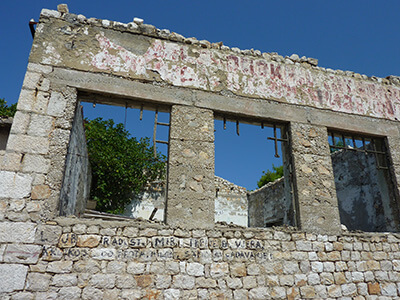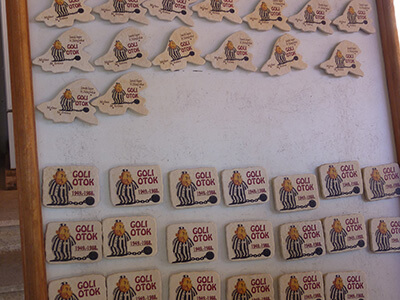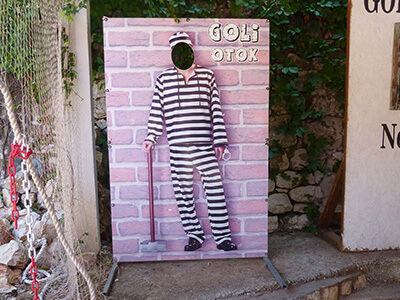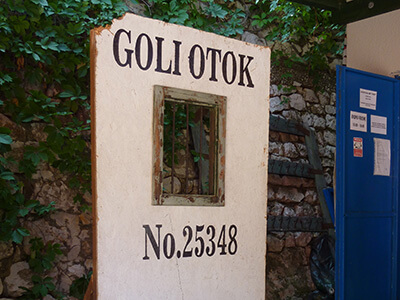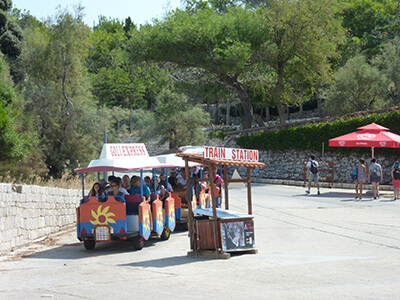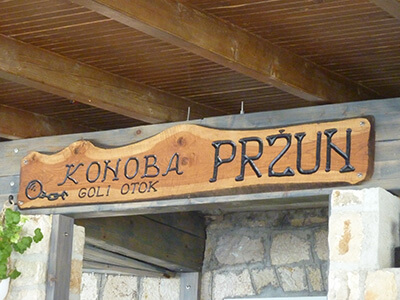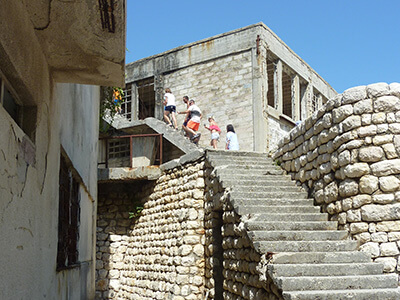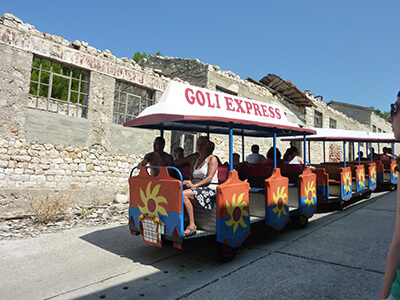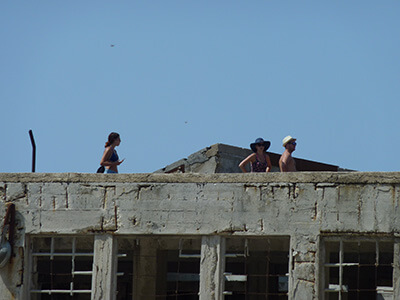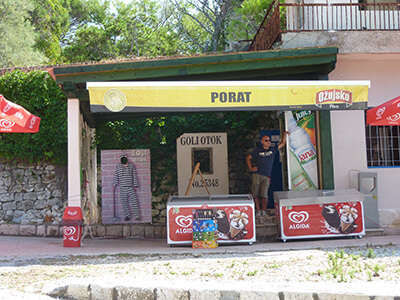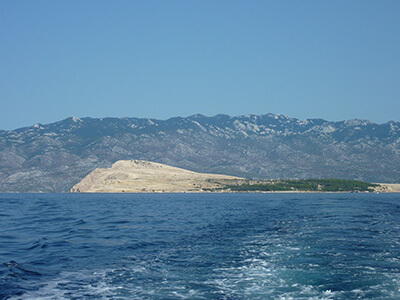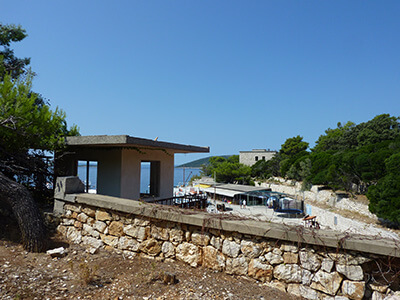
Goli Otok
CZ/ENGWhat Happened In This Place
After the Second World War, the new Yugoslav regime, with Josip Broz Tito at its head, started to build an authentic, Stalinist model of the economy and society. A change came in the spring of 1948, with the Soviet-Yugoslav Split. After this conflict, which is also known as the Tito-Stalin Split, Yugoslavia was effectively no longer a member of the Eastern bloc. In 1949, an internment camp (or de facto prison) was established on the island of Goli Otok in the north Adriatic Sea for political opponents of the ruling circles, who were often labeled as Stalinists. There were also people imprisoned on the island who, of course, had never committed any offenses. The name of the island (literally, “bare island”) became truly revealing during that time, because it really was just a bare rock in the middle of the sea. Political prisoners were forced to carry out hard physical labor under the threat and reality of physical violence. A lack of basic necessities, primarily drinkable water, also reigned on the island. The last political prisoner left the camp in 1956, but on another part of the island, a criminal prison was nevertheless built at the same time, and later it would be known across all of Yugoslavia. This prison was closed in 1988. Over those approximately 40 years, 30,000 people were imprisoned on the island, about 2,000 died there.
How This Place Looks Today
As a place with a troubled history, Goli Otok often turns up in tourist guidebooks, which leads to heightened interest in it. Only ruins of prison buildings still remain of the criminal prison, which is located directly where boats anchor. These ruins are freely accessible, although no one manages them. Of the former political prison, which lies to the north of the harbor, not much still survives. The uninformed visitor might not even realize that he’s standing on the grounds of a former prison. What might give that visitor a clue, though, are the relatively tasteless tourist souvenirs, whether magnets with kitschy pictures of prisoners, or the option of taking a picture at a photo wall with the motif of a prisoner’s striped uniform. For the more callous visitors, you can also take a tourist train around the island called the Goli Express, which ends its journey at a restaurant with a prisoner’s ball on its signboard.
What This Places Serves As
Goli Otok lies within an accessible distance from the favored tourist destinations on the islands of Krk and Raab. Therefore, for many summer visitors, this location of a former political prison becomes a sure way of adding some variety to their vacations. Even the restaurant at the harbor — which was originally staffed by former prisoners — attests to the fact that the numbers of visitors aren’t low. The majority of visitors are, of course, Croatians, but they come as tourists. If you look for an official school fieldtrip, you would be looking in vain.
What Is (Not) Remembered Here
Goli Otok is difficult to place in today’s Croatian narrative, which is connected with the phenomenon of suppressing events from Yugoslav history in the Croatian memory. Because of this, it isn’t a place of memory for the Croatia that exists today, but rather one of a defunct state, whose breakup was accompanied by a traumatizing war that is, to this day, highly emphasized in Croatia. The national question plays another role here, as the prisoners weren’t only Croatians, but Yugoslavs more generally — and the majority of them were also communists. During the 1990s, the government wasn’t interested in investing in the place in order to build a memorial to the political prisoners. The situation hasn’t changed in the following years. So even on the island today, we won’t find any museums or memory institutions that would take care of this historically problematic place.
